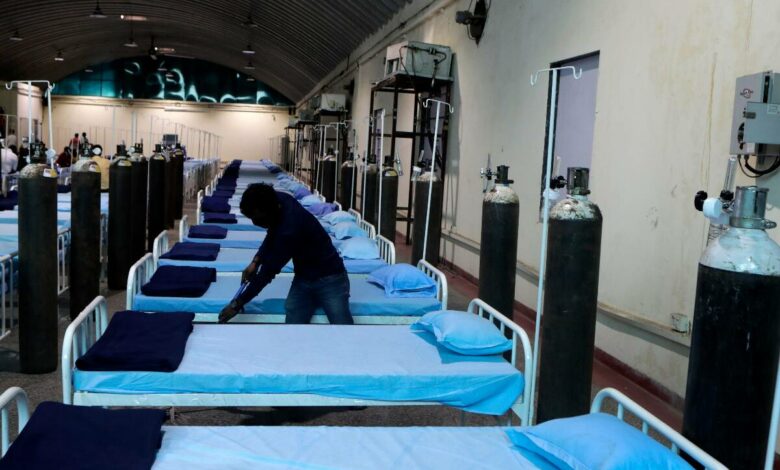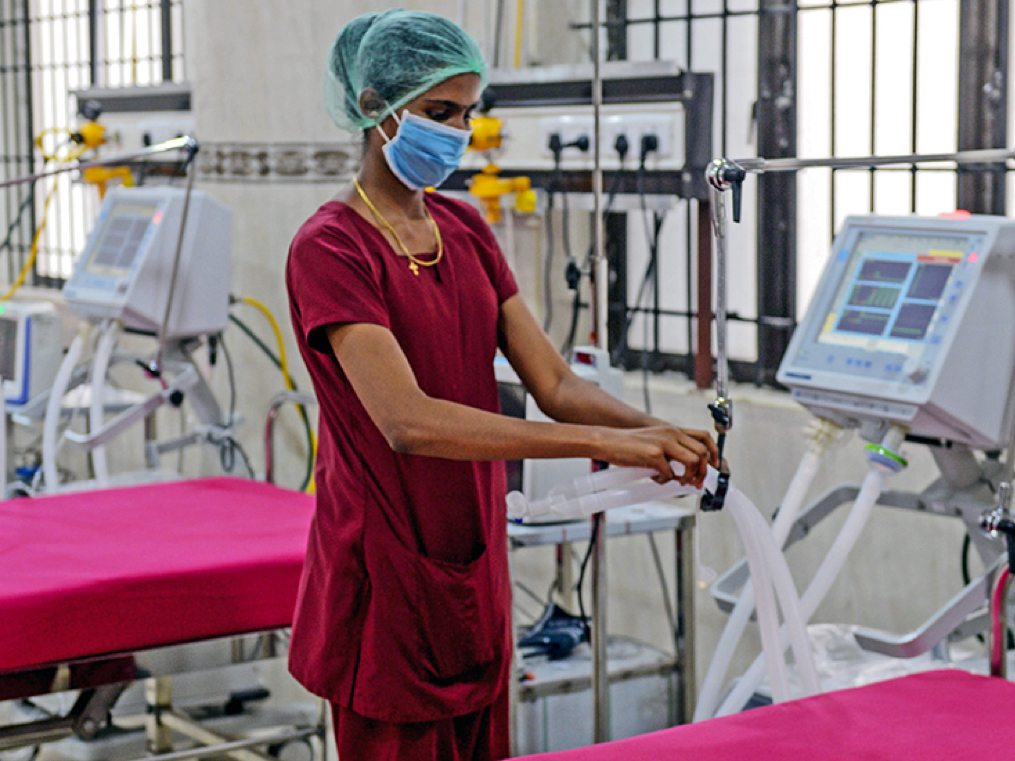
If the need is the mother of invention, then the medical crisis is clearly its father. If you have any questions, take a look at the pace of innovation unleashed in the past 12 months in the shadow of COVID-19.
From the production of new vaccines in just a few months instead of the usual years to the development of a new technology platform like mRNA to the establishment of unique partnerships to provide vaccines and healthcare solutions to the sheer creativity and innovation of the program all over India and the world. The medical crisis has made innovative ways of thinking withstood an unprecedented test.

The Medical Crisis
India also has its due share in this area, including developments in vaccine manufacturing to bridge the gap in the availability of key medical accessories (such as personal protective equipment (PPE)) and even testings to detect COVID.
It is now looking to deal with the increasing number of cases. For example, today, almost only one company in India uses almost all the technology platforms deployed globally-the Serum Institute of India is becoming a major supplier of vaccines and gaining global popularity, and other Indian companies will soon establish themselves in medical market.

The Power Of Networks
The philanthropist, co-founder of Indian IT giant Infosys, and chairman of Axilor Ventures, Kris Gopalakrishnan, who supports and funded some innovative start-ups, believes that innovation attempts can be divided into three different categories – one involves the development of actual science itself, leading to COVID-19 relevant innovations are taking place in the country (from vaccine production to expansion of virus sequencing work), second: followed by the nature of cooperation between academia, government, industry, regulatory agencies, venture funds and research institutions that not only bring innovation to the market, but even innovate the problem which was solved locally- (third) from developing vaccines to addressing critical shortages, and trying to increase oxygen supply.
Telemedicine To Oxygen Supply
For example, in June last year, in the first collaboration, a coalition of more than 100 healthcare professionals supported by the industry jointly launched a nationwide platform i.e the Swasth platform focused on COVID care, aimed at connecting patients remotely to the health care staff. Dr. Ajay Nair, CEO of Swasth, believes that today’s focus is on telemedicine, which has now become a platform that connects various healthcare entities (start-ups, technology providers, hospitals, and non-governmental organizations involved in primary healthcare) to solve acute problems, such as providing oxygen.

In the past five months, due to concerns about the second wave, it has provided 160 oxygen concentrators to remote areas in many states (including Maharashtra, Uttar Pradesh, and other states). Now, due to the demand for oxygen is very urgent, and it is trying to increase it to 2000. The concentrated personnel will complete their work by mid-May and speed up the search for volunteers to help them clean up and verify the data.
Leveraging In Deep Technology
In fact, according to Nasscom’s latest research, about 19% of startups in the country are trying to use deep technologies to build complex and smart solutions, some of which are purely focused on healthcare and financial technology. “Deep technology” is a very loosely field, where companies research technologies such as machine learning (ML), blockchain, artificial intelligence (AI), and genomics, and deploy engineering technology innovations to provide innovative solutions programs.
Rethinking The Diagnosis
A computer science engineer and co-founder of Bangalore-based alphanumeric company 5CN (5 C Networks), Kalyan Sivasailam, is innovatively using the power of the network to solve healthcare problems and provide diagnostic services to hospitals and diagnostic centers. We are establishing a digital workspace for diagnosis in India. Patient tests (scans, etc.) and related information will be automatically extracted into 5C so that he can not only contact experts but also complete tasks in the shortest time.

He explained: Through our “scribe” algorithm, we can reduce this time by more than 70%. Then use our MaxFlow algorithm to assign cases to the best available diagnostic experts. Then, the integrated algorithm will provide support to our diagnostic experts: Cerebro (for brain CT), Charles (for chest X-ray), and Cal (for hand X-ray) which flag abnormalities.
The output content is transcribed by our ‘Sid’ algorithm and then the radiologist will review this in detail. Our model “Bacon” analyzes the burden of disease data in each region and proposes appropriate differential diagnosis methods. Radiologists give their final report. Finally, we use it for quality inspection. The “sigma” of the product will be flagged to report potential errors, and then reviewed by our internal quality inspection QAQC team.
He saw the impact of the number of students enrolled: in the days before the pandemic, we had to deal with 450 customers (hospitals and diagnostic centers) handling 2,200 cases every day. Currently, we are handling 7,500 cases from 900 customers every day which involve 27 states. We are seeing one percent of the total number of X-ray examinations and scans that take place in the country-about 750,000 in his estimate. Among them, those used for COVID may be about 25,000. Inventiva Online cannot independently verify this.
Single Round Pooling Method
Then, there is another newly established company-Algorithmic Biologics Pvt Ltd. The company is supported by IIT Mumbai professor Manoj Gopalkrishnan. The company aims to market the solution developed at IIT Mumbai last year to test COVID when using the combined method, without any repeated testing, which saves time, cost, and energy. Therefore, what is the core of its single-round pooling method?
The professor explained: The tapestry confluence (pooling) is our technology. The idea is to divide each sample into three pools. Each pool is tested by an RT-qPCR assay, which returns an indication of the number of virus copies in the pool. Quantity. Our algorithm solves the problem of using these quantities to identify positive samples and indicate the number of virus copies that reach the positive samples. More simply, he said: Based on the pattern of combined pool results, we can identify which samples in a single round are positive.
Beyond COVID-19
And it’s not just COVID-the main medical crisis facing India and the world is the increase in antibiotic resistance-the problem of superbugs. The rate of consumption of antibiotics may occur in the future. We may perform simple surgical operations, but we will be infected and unable to fight with the available antibiotics. To meet this challenge, a startup company called Bugworks Research was established in February 2014.
Anand Anandkumar, its co-founder and CEO, said in an interview: Although we are small, we are actually a web-based model – with Syngene, Narayana Health to Colarado State University, and Tokyo Institute of Technology, etc., 40 multiple partners work together. The innovative approach is not only partnerships (in fact, Anandkumar prefers to call himself CEO (chief ecosystem officer)), but it is also a research focus.
He explained in a very simple manner: It’s about looking at the efflux pump (transporter) that resides inside the bacteria and turns on to resist antibiotics. Anandkumar stated the focus is on designing antibiotic compounds that are not visible to the excretion pump. This reveals a new method for designing compounds against antibiotic resistance.
Regarding the status, he said that if all goes well, the first phase of the trial can be started in Australia before the end of July this year (approval for the first phase of the trial has obviously been obtained), and then the trials will be conducted in India and the United States for the second phase of the test. The same solution can be deployed to a biodefense solution, which may have a wider range of applications not only in India but even globally.



